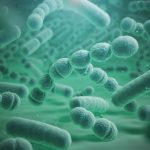3D bio-printing1 combine cells, growth factors and biomaterials to make biomedical parts that mimic natural tissue. Its aim is to produce transplantable human tissues to replace damaged or diseased tissue. Actually, it is focused towards producing lost tissue of the knee or hip as a result of arthritis and for such application as abdominal, tracheal and breast reconstruction following cancer. The steps for preparing 3D bio-printing are the following: 1. Graft design; 2. Built specific pattern/mold using thermoplastic polymer 3. Load natural or synthetic hydrogel into 3D printing nozzle: natural polypeptide or polysaccharide as chitosan, hyaluronic acid and heparin or synthetic polymers as polyethylene glycol, polyacrylate or polyvinyl alcohol. 4. Seed Bioink. It is made from healthy or stem cells extracted from patient. These cells are cultured and growth before seeding. 5. Placed printed piece in growth media for maturation. In this step biomaterial disintegrates allowing cells to form stronger interaction (tissue). After the corresponding aging time, a solid tissue is formed that can be used for transplantation or drug development studies.
For knee and hip lost tissue, chondrocyte cells (from healthy cartilage) are used to produce and maintain cartilaginous matrix. This extracellular matrix (ECM) mainly consists of collagen and proteoglycans.

1.- P. Vázquez-Aristizabal, G. Perumal, C. García-Astrain, L. M. Liz-Marzán, A. Ize, ACS Omega (2022). https://doi.org/10.1021/acsomega.2c01398





